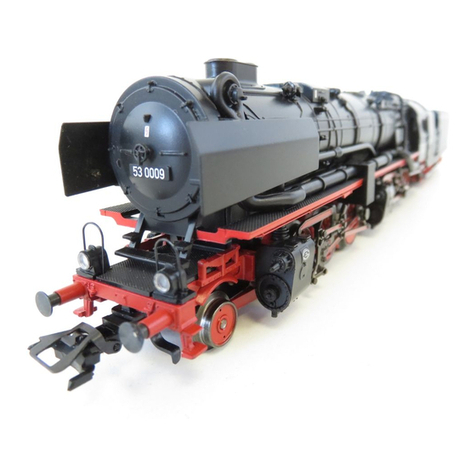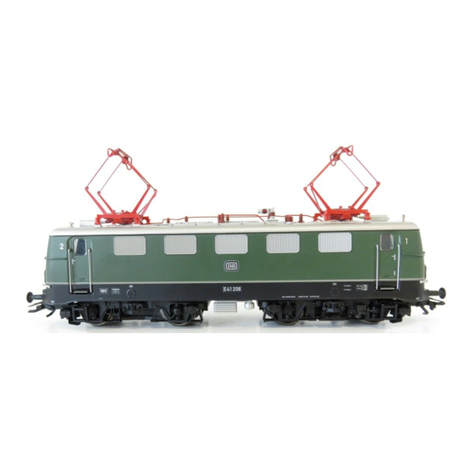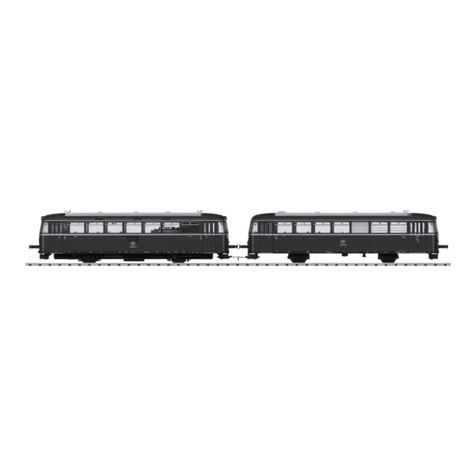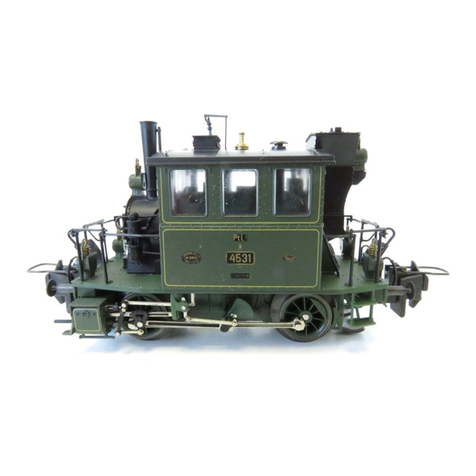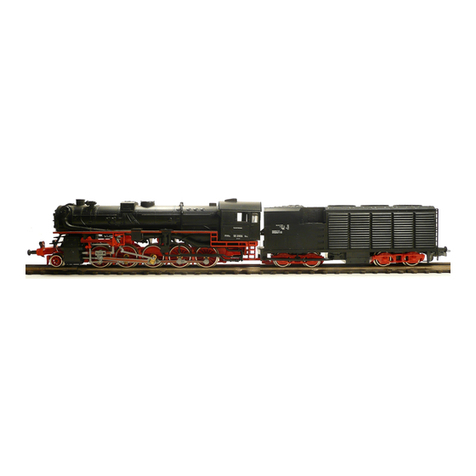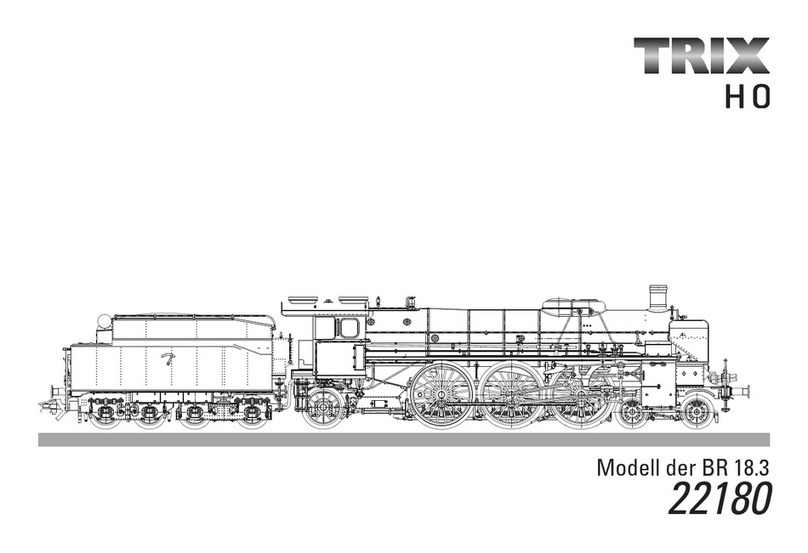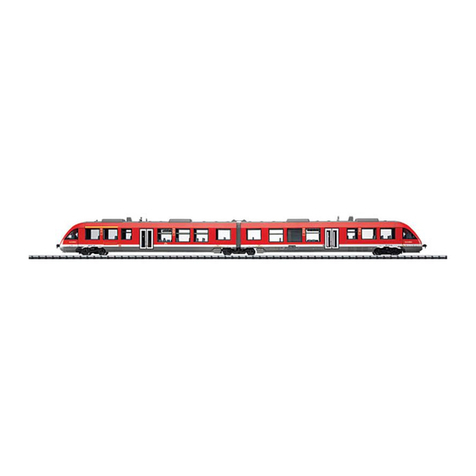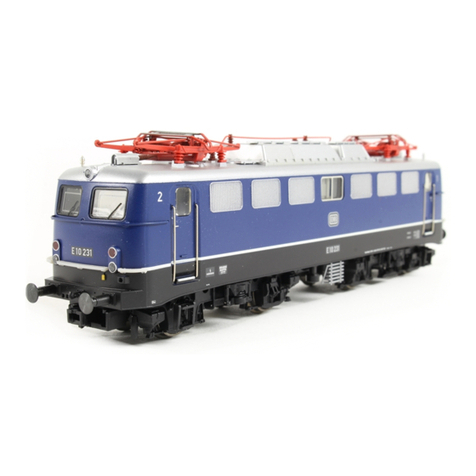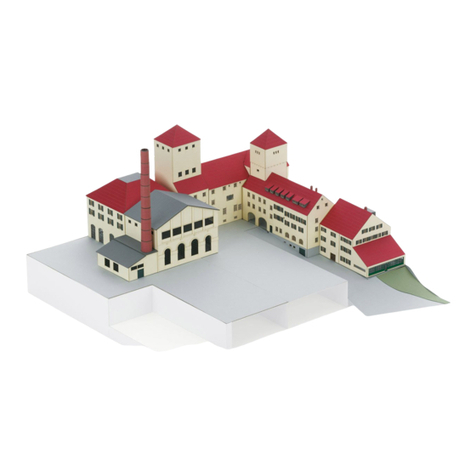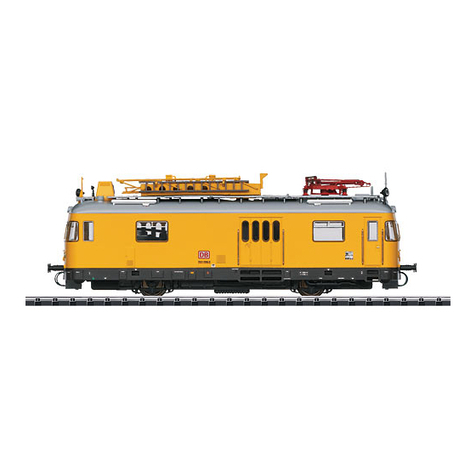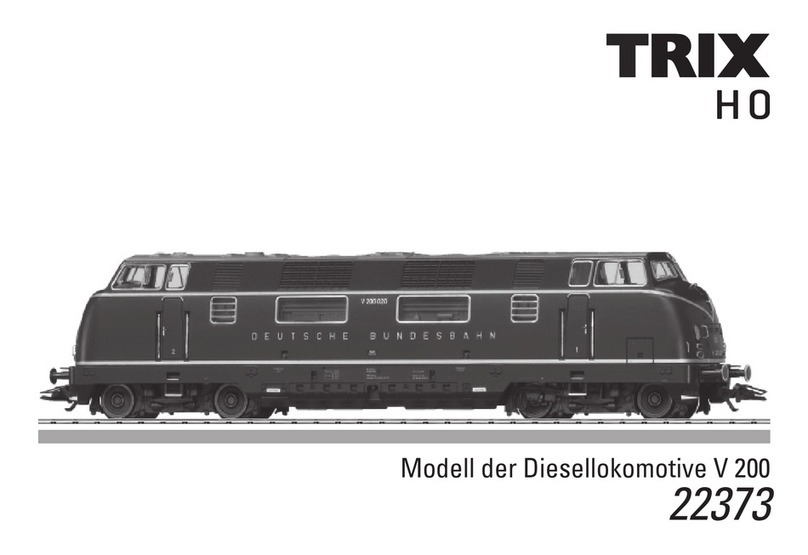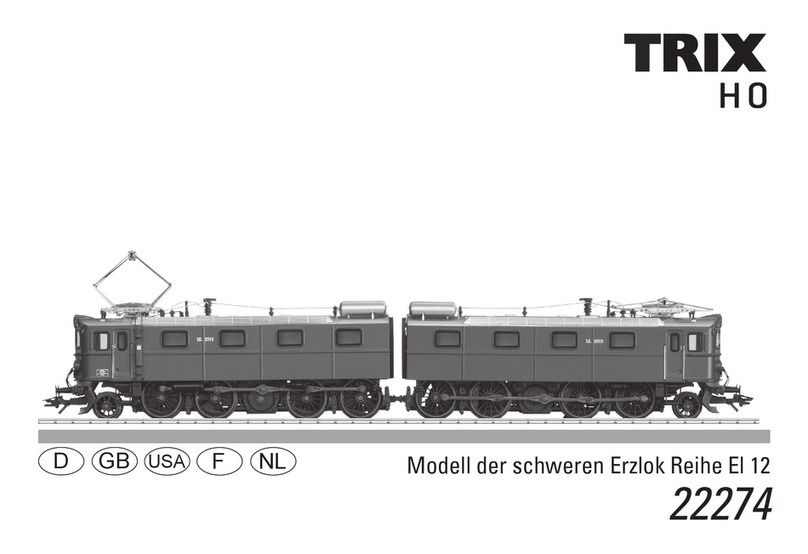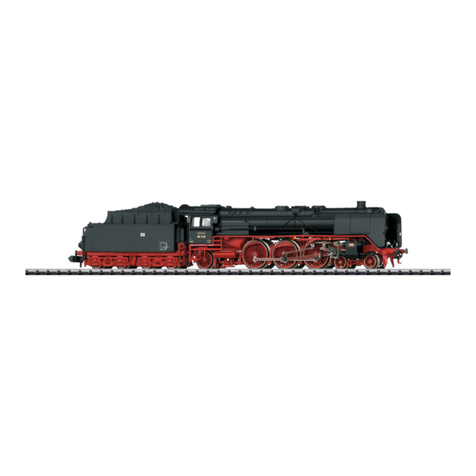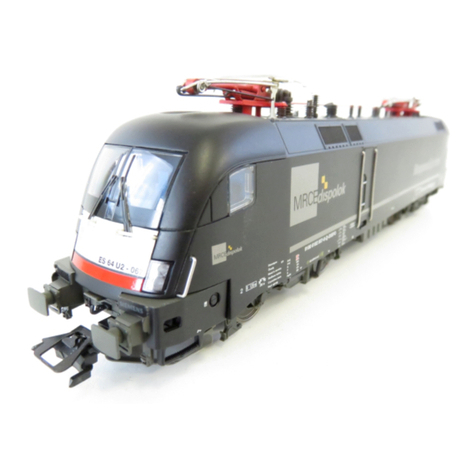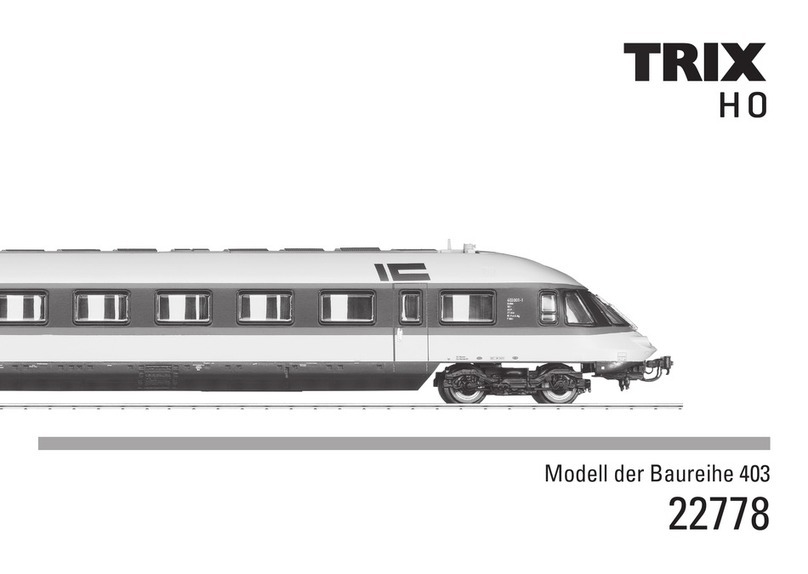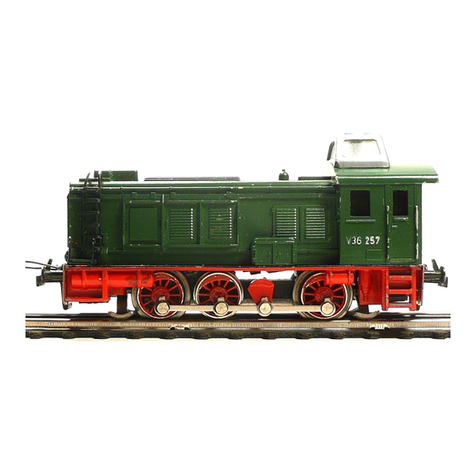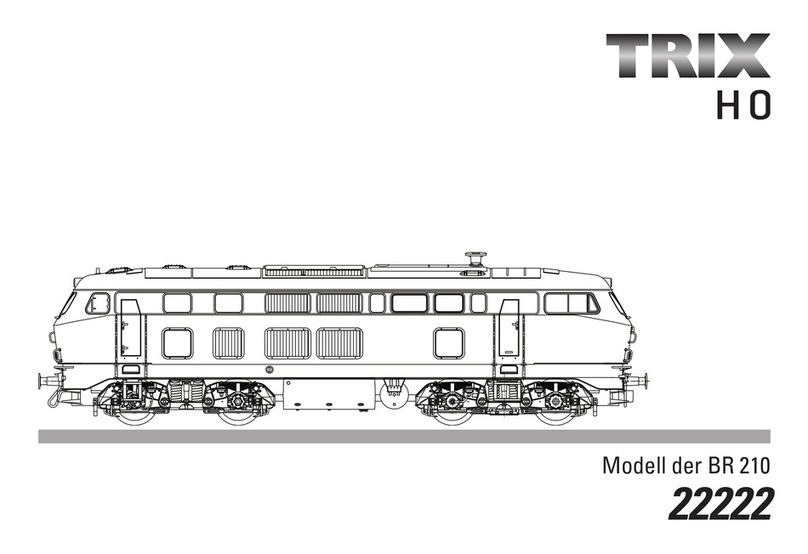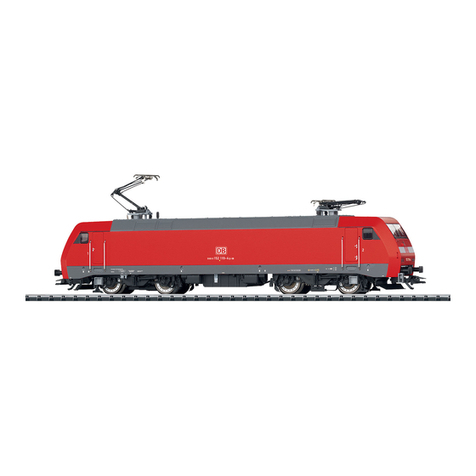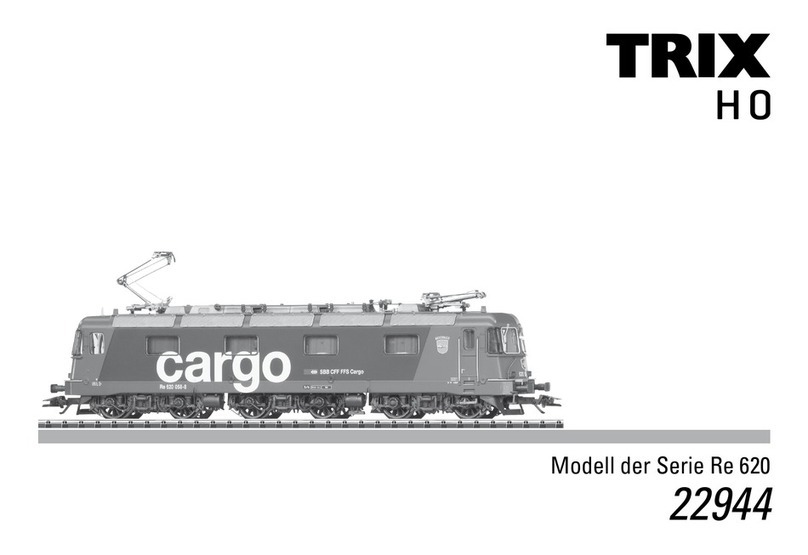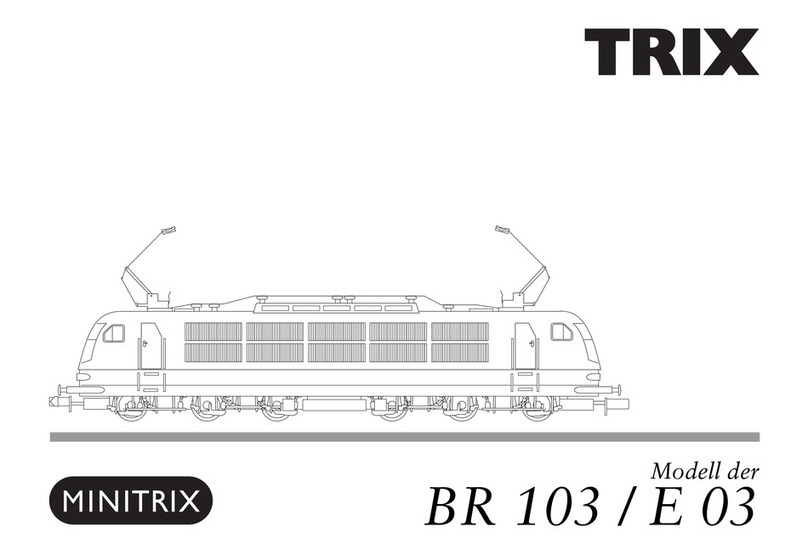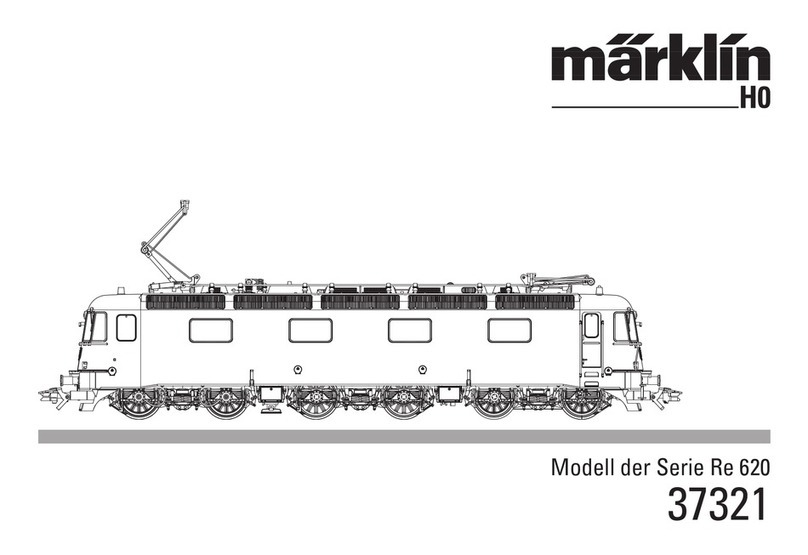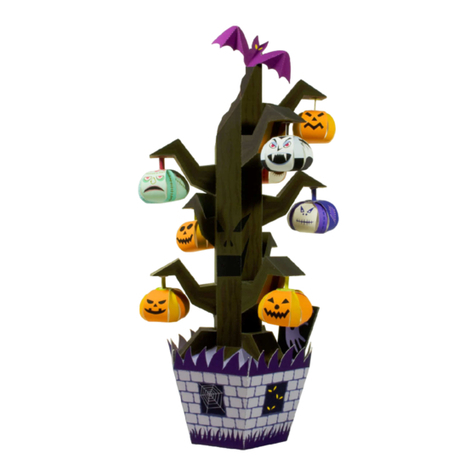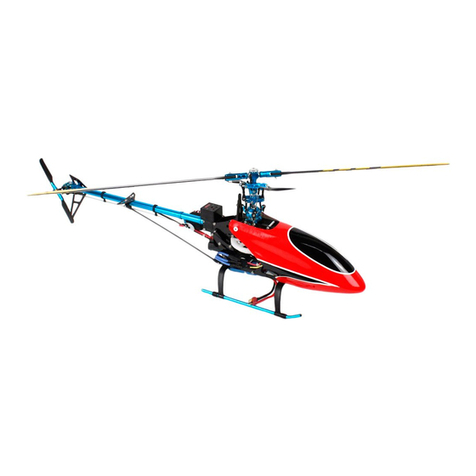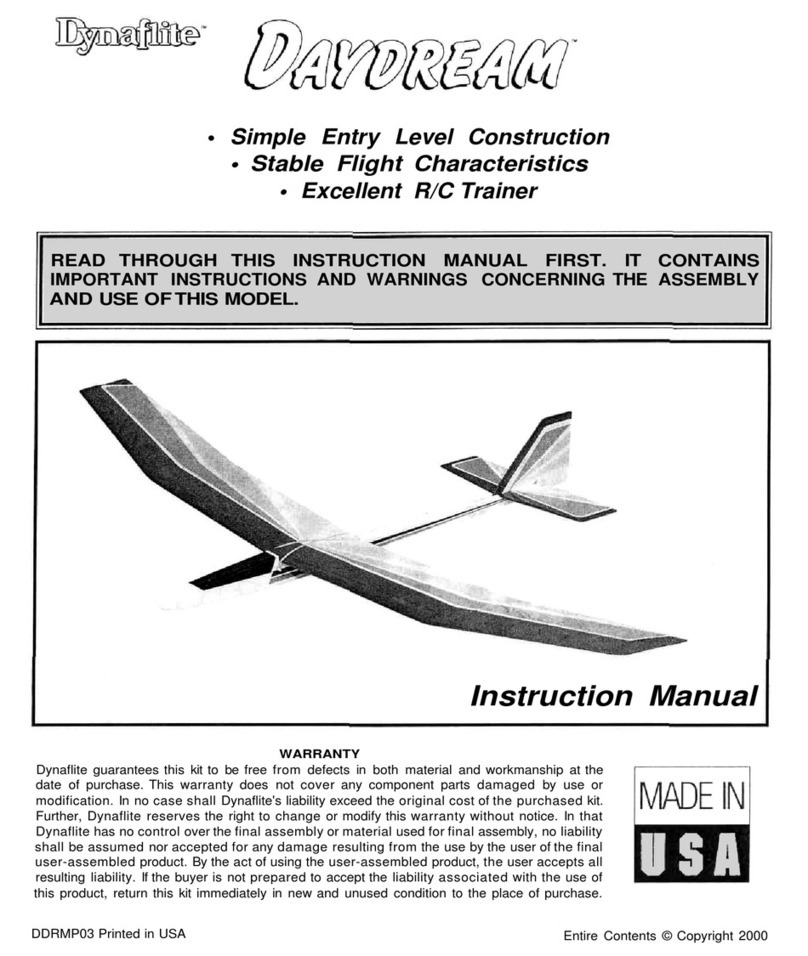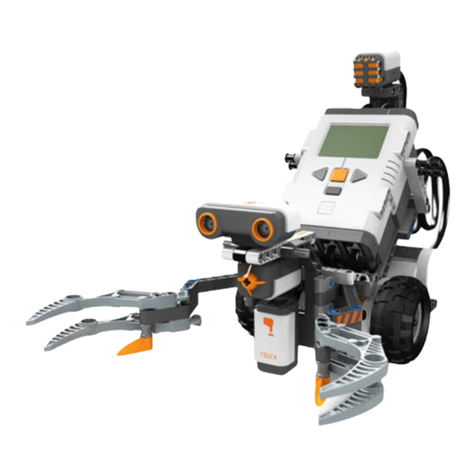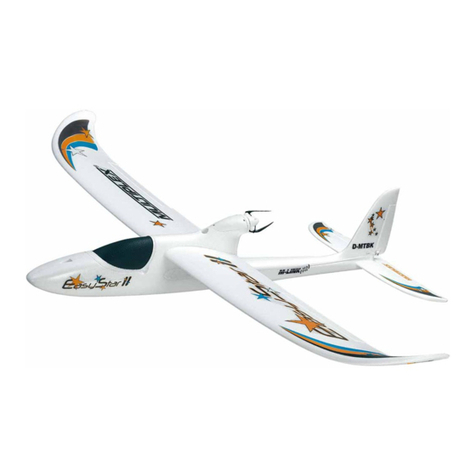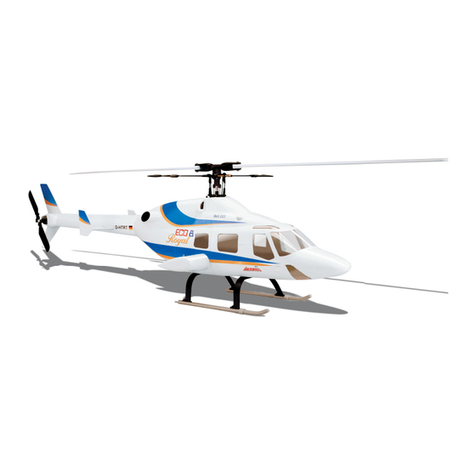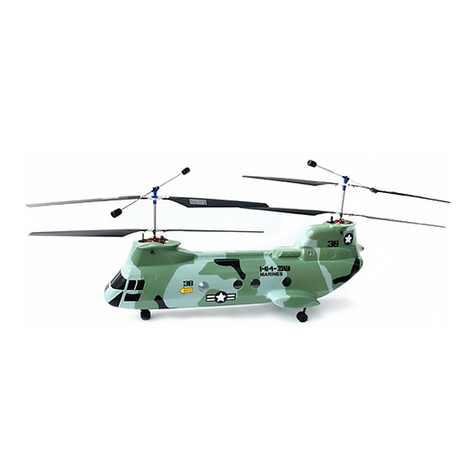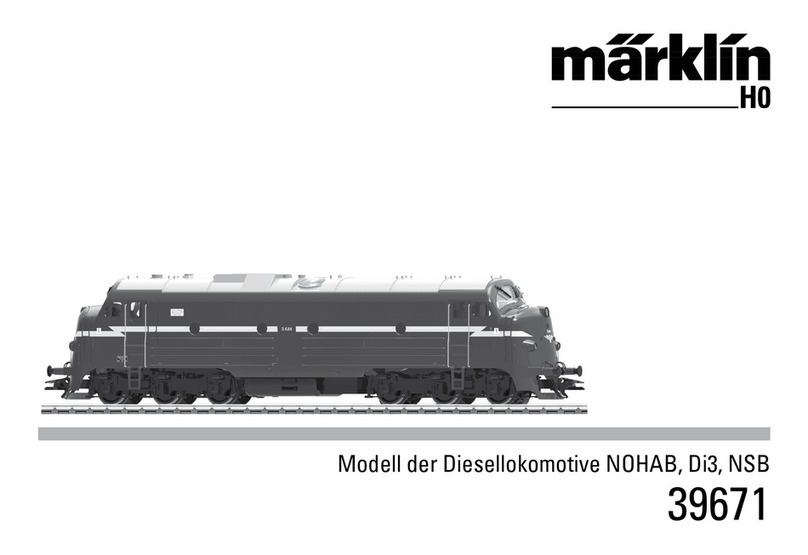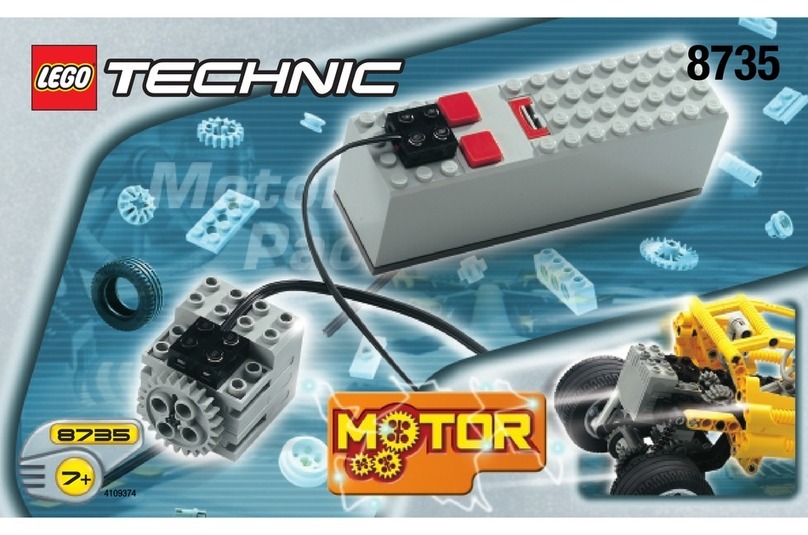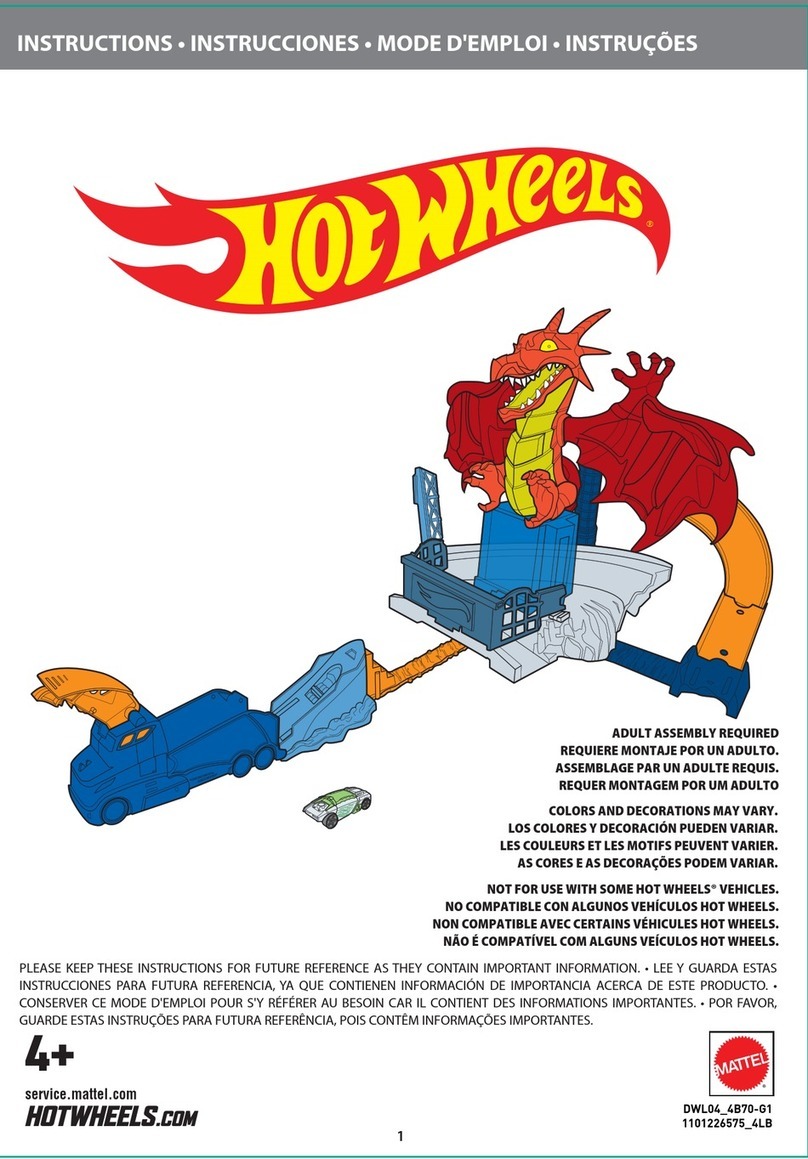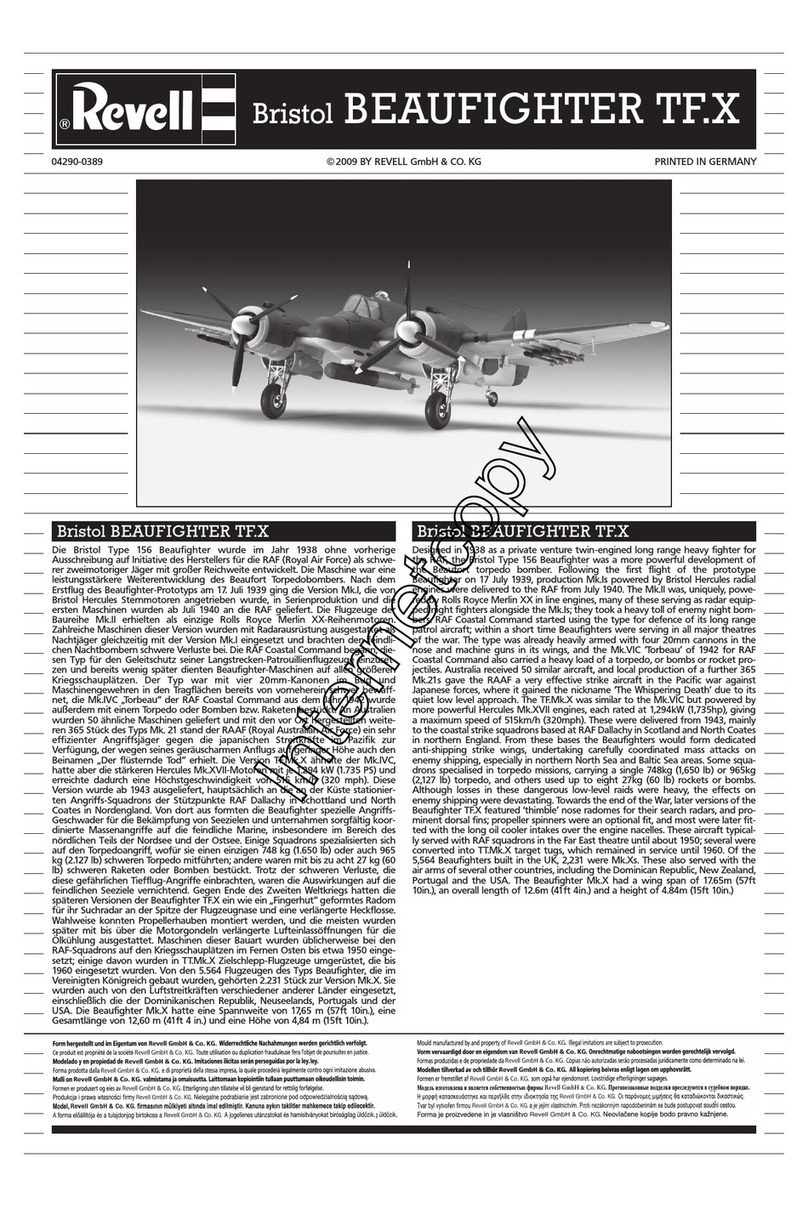3
Vitesse maximals 140 km/h
Puissance nominale 1.350 kW
Fabrication à partir de 1957
Maximumsnellheid 140 km/h
Nominaal vermogen 1.357kW
Bouwjaar vanaf 1957
Serie RAm
Le TRANSEUROPEXPRESS helvetico néerlandais a
été réalisé en 5 exemplaires. Ces rames circulaient
sur la ligne Zürich - Amsterdam sous la dénomination
TEE „Edelweiß“. Trois gros moteurs diesel fournissant
ensemble une puissance de 1700 kW (deux moteurs de
commande, un moteur pour équipement secondaire)
conféraient au train une vitesse de 140 km/h. Les
fenêtres ne pouvaient pas être ouvertes, car toutes les
voitures étaient climatisées. Ce train, comme tous les
trains TEE, ne comportait que des compartiemnts 1e
classe. Il offrait 114 places assises et le salon restau-
rant pouvait accueillir 32 voyageurs.
Les trains se composaient principalement de quatre
éléments: une voiture à compartiments, la voiture re-
staurant et une voiture à couloir central avec le second
poste de conduite permettant d‘inverser le sens de la
marche dans les gares têtes de ligne.
Après la mise hors service d‘un train CFF en 1971 à
la suite d‘un accident, le second train CFF ainsi que
les trois trains NS furent vendus en 1976/1977 à la
„Ontario Northland“ canadienne et adaptés aux normes
nordaméricaines. Vers 1980, ils reçurent des locomoti-
ves de renfort de la General Motors, plus résistantes en
hiver. L‘ancien TEE assura son service jusqu‘en 1992
sous le nom de „Northlander“.
Serie RAm
Van de Nederlands/Zwitserse TRANSEUROPEXPRESS
zijn 5 treinstellen aangeschaft, die op het traject Zürich
- Amsterdam als TEE ‚‘Edelweiss‘‘ reden. Drie sterke
dieselmotoren met een totaal vermogen van 1700 kW
(twee motoren voor de aandrijving, één motor voor een
hulpaggregaat) gaven de trein een snelheid van 140 km/h.
In deze trein konden de ramen niet geopend worden, om-
dat ieder rijtuig volledig airconditioned was. Zoals bij alle
TEEtreinen waren er alleen rijtuigen eerste klasse, waarin
114 zitplaatsen ter beschikking stonden. In het restaura-
tiegedeelte konden 32 gasten ont vangen worden.
De treinstellen worden in principe vierdelig ingezet:
een coupérijtuig, het restauratierijtuig en een salon
rijtuig met de tweede cabine voor de verandering van
de rijrichting in kopstations. Nadat reeds in 1971 een
trein van de SBB door ongevalschade uitgevallen was,
werden in 1976/77 de tweede SBBtrein en de drie
treinen van de NS aan de Canadese Ontario Northland
verkocht en volgens Noordamerikaanse voorschriften
omgebouwd.
Rond 1980 werden lokomotieven van General Motors,
die de winters beter konden doorstaan, voor de trein
gezet. Als „Northlander‘‘ was de toenmalige TEE tot en
met 1992 in dienst.
